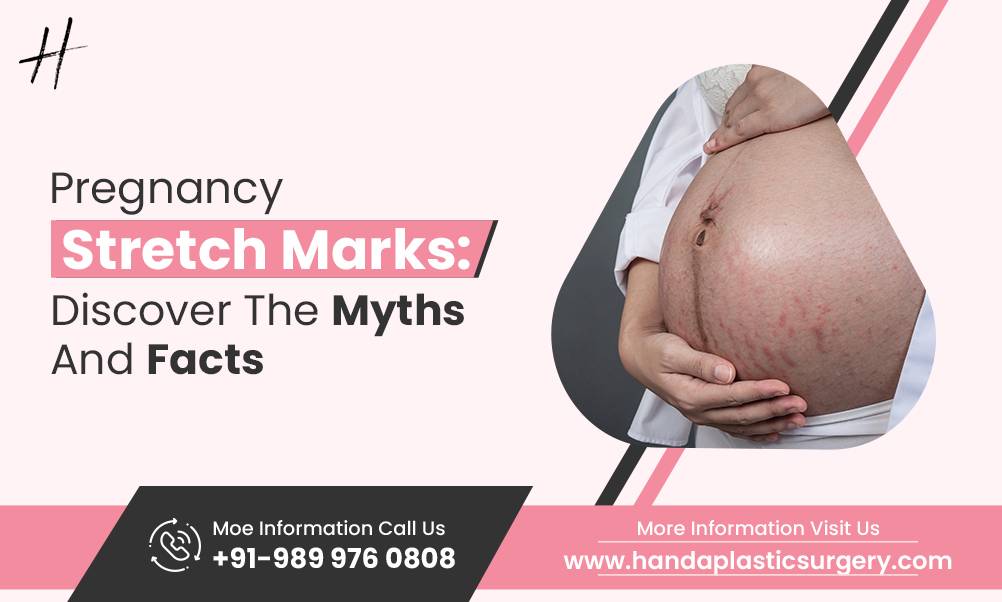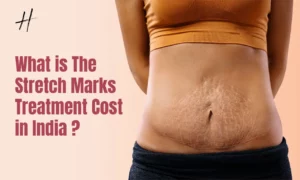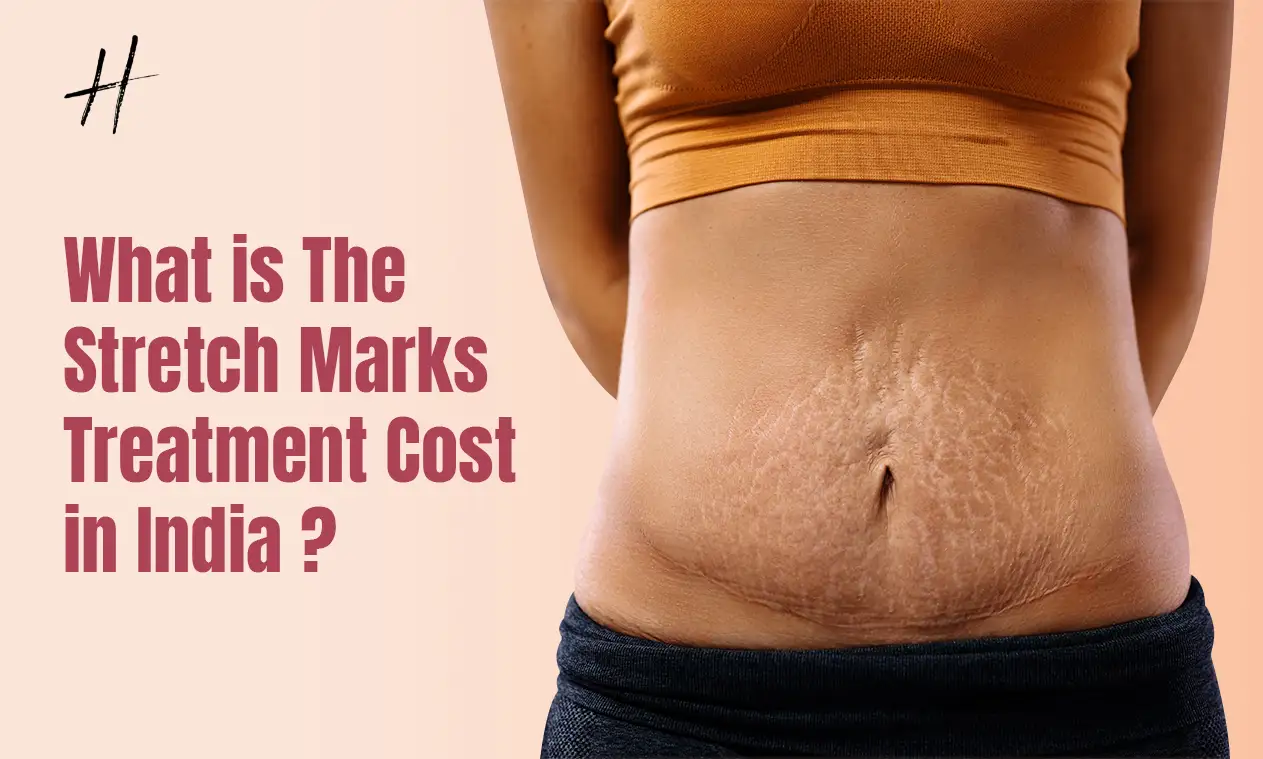Becoming a mother is a profound experience, bringing with it a host of physical changes. One of the most common yet misunderstood aspects is the development of pregnancy stretch marks. These distinctive marks bear witness to the incredible changes a woman’s body undergoes during this transformative phase. However, the topic is often clouded by misconceptions. In this blog, we’ll delve into the myths and facts surrounding these marks, aiming to provide clarity and support to all mothers navigating this beautiful phase of life.
Understanding Pregnancy Stretch Marks
Pregnancy stretch marks, also known as striae gravidarum, are visible lines on the skin that often appear during pregnancy. These marks are a result of the skin stretching rapidly to accommodate the growth of the body during pregnancy. They commonly occur in areas prone to expansion, such as the abdomen, breasts, hips, and thighs. The stretching causes the elastic fibers in the skin to break, leading to the formation of these marks. While they are a natural part of the body’s response to pregnancy, the appearance of stretch marks varies among individuals, influenced by factors like genetics, hormones, skin type, and overall skin health.
Related Blog: Stretch Marks Treatment Cost In India
Myths and Facts About Pregnancy Stretch Marks
Here are some common myths and facts that provide insights into what really influences these natural imprints, helping us navigate the realities of this phase with clarity and confidence:
Myth: Only Overweight Individuals Get Stretch Marks
Fact: Stretch marks can affect individuals of all body types during pregnancy. Weight is not the sole determining factor; rather, rapid skin stretching is a common occurrence across various body shapes.
Myth: Expensive Creams Can Prevent Stretch Marks
Fact: While skincare is essential, the belief that high-priced creams alone can prevent stretch marks is a misconception. Genetics plays a significant role, and a holistic approach, including hydration and nutrition, is crucial for skin elasticity.
Myth: Stretch Marks Disappears Completely Postpartum
Fact: While stretch marks may fade over time, complete disappearance is uncommon. Embracing realistic expectations for postpartum skin changes is essential for self-acceptance and a positive body image.
Myth: Stretch Marks Are a Sign of Poor Health
Fact: Stretch marks are a natural outcome of the skin adapting to pregnancy-related changes. They are not indicative of poor health but rather a common and temporary part of the motherhood journey.
Myth: Only First-Time Moms Get Stretch Marks
Fact: Stretch marks can occur in any pregnancy, regardless of whether it’s the first or subsequent pregnancies. The likelihood varies based on different factors like corticosteroid use, young maternal age, multiple pregnancies, etc.
Myth: Stretch Marks Are Always Itchy
Fact: Itching can be associated with stretch marks, but not everyone experiences it. The sensation varies among individuals, and it’s essential to address any discomfort with suitable skincare measures.
Myth: Nothing Can Prevent Stretch Marks
Fact: While complete prevention is challenging, maintaining good skincare practices, staying hydrated, and adopting a healthy lifestyle can help minimize the severity of stretch marks.
Understanding the facts about pregnancy stretch marks can dispel myths, promoting a realistic and positive perspective on these natural body changes during the phase of motherhood.
Prevention and Treatment of Stretch Marks
Lifestyle Changes
To prevent and manage stretch marks, lifestyle adjustments play a crucial role:
- Avoid Stress: Managing mental health and emotional well-being is crucial. Stress triggers hormonal changes that can impact skin elasticity, potentially leading to stretch marks.
- Skincare Routine: A healthy and regular skincare routine, involving moisturization and nourishing products, supports skin elasticity, reducing the likelihood of stretch marks.
- Gentle Massage: Regular, gentle massages promote blood circulation and collagen production, aiding in skin elasticity and minimizing the appearance of stretch marks.
- Dietary Recommendations: Adopting a nutritious diet rich in vitamins C and E, zinc, and collagen-building foods supports skin health, contributing to the prevention and management of stretch marks.
Related Blog: How To Get Rid Of Stretch Marks: 11 Ways To Try For Visible Results
Clinical Treatment Options
Discover effective clinical treatments at The Handa Aesthetics and Plastics for managing pregnancy stretch marks. Their offerings include:
- Laser Therapy: Employing advanced laser technology, this treatment targets and reduces the appearance of stretch marks, enhancing skin texture.
- Topical Treatments and Creams: Expert-recommended topical solutions and creams are tailored to nourish and revitalize the skin, minimizing the prominence of stretch marks.
- Microdermabrasion: A skin-refining option that enhances texture by gently exfoliating, promoting improved skin tone, and reducing the visibility of stretch marks.
These clinical interventions aim to empower individuals in their journey toward healthier and more resilient skin.
For personalized guidance on the most suitable clinical treatment for your unique needs, consider consulting the experienced professionals at The Handa Aesthetics and Plastics. Their expertise ensures a tailored approach to address your specific concerns and achieve optimal results.
Conclusion
As we wrap up, let’s celebrate the incredible journey of pregnancy and the marks it leaves on our bodies. Those stretch marks? They’re badges of honor, telling a unique story of strength. At The Handa Aesthetics and Plastics, you’ll find support and personalized solutions. Your changing body isn’t just natural; it’s a testament to your resilience. Motherhood is a journey, and every mark is a reminder of the beauty within it. Embrace your unique experiences and walk into this chapter with confidence. For tailored support, consider reaching out to The Handa Aesthetics and Plastics – where understanding and expertise meet.




